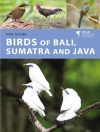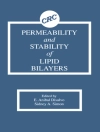Mutation breeding has been introduced into modern plant breeding in the early 1940’s. In spite of pessimistic predictions, the application of experimental mutagenesis has led to encouraging results demonstrating that mutation breeding is a well-functioning method in many crops. So far, more than 500 varieties, developed by means of induced mutations, have been officially released; others have been approved for registration. Many mutants with characters of agronomic interest cannot be utilized directly because of their unsatisfying yielding capacities, or of other negative traits which are partly due to the pleiotropic action of the mutant genes. Sometimes their negative selection value can be overcome by transferring them into the genomes of other varieties. According to experience available, the efficiency of mutant genes can con Siderably vary depending on the genotypic background in which they become effective. The interactions between mutant genes and genotypic back- ground cannot be predicted. Therefore, mutants with valuable traits should be crossed with many varieties and strains in order to discern positive and negative interactions. In this way, genotypes can be selected in which the mutant gene is able to express its action without showing negative by-effects. This procedure has been used for about 10 years by combining the methods of mutation and crossbreeding. Mutation breeding is predominantly used in annual diploid and allo- polyploid self-fertilizing crops, while it causes much more difficulties in cross-pollinating species.
W. Gottschalk & G. Wolff
Induced Mutations in Plant Breeding [PDF ebook]
Induced Mutations in Plant Breeding [PDF ebook]
Beli ebook ini dan dapatkan 1 lagi PERCUMA!
Bahasa Inggeris ● Format PDF ● ISBN 9783642819971 ● Penerbit Springer Berlin Heidelberg ● Diterbitkan 2012 ● Muat turun 3 kali ● Mata wang EUR ● ID 6334222 ● Salin perlindungan Adobe DRM
Memerlukan pembaca ebook yang mampu DRM












